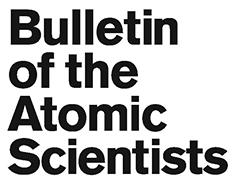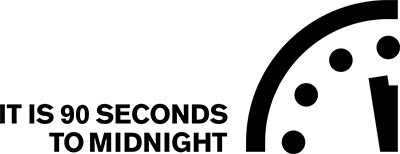
Bulletin of the Atomic Scientists, August 5, 2024
Posted: 5th August 2024

A mother and child sit on the ground in Hiroshima, Japan, in December 1945. On August 6, some four months previously, the United States had dropped an atomic bomb on the city. Three days later a second one was dropped on Nagasaki. (Photo by Alfred Eisenstaedt / The LIFE Picture Collection via Getty Images)
79 years ago this week, the United States dropped two atomic bombs on the Japanese cities of Hiroshima and Nagasaki. In commemoration, this edition of the Bulletin’s newsletter is dedicated to articles, new and archival, that reflect upon the attacks.
What do Americans really think about the bombing of Hiroshima and Nagasaki?
By Scott D. Sagan, Gina Sinclair | August 5, 2024
In mid-August 1945, within weeks of the end of World War II, Americans were polled on whether they approved of the atomic bomb attacks on Hiroshima and Nagasaki. An overwhelmingly high percentage of Americans—85 percent—answered “yes.” That level of approval has gone down over the years, with (depending on the precise wording of the question) only a slim majority (57 percent in 2005) or a large minority (46 percent in 2015) voicing approval in more recent polls.
This reduction in atomic bombing approval over time has been cited as evidence of a change in public consciousness or the acceptance of a “nuclear taboo.” This common interpretation of US public opinion, however, is too simplistic. A new, more complex public opinion survey, conducted for this article, show that if you scratch beneath the surface, the American public today, as in 1945, does not display an ethically based taboo against using nuclear weapons or killing enemy civilians. Rather the public’s preference is to do whatever was necessary to win the war and save American lives.
Read more

Video: How many people were killed by the bombing of Hiroshima and Nagasaki?
By Erik English | August 5, 2024
In 2020, nuclear historian Alex Wellerstein published original research with the Bulletin, describing the challenges of tabulating the casualties of the bomb in Hiroshima and Nagasaki. Without accurate records of the population prior to the bombings, Allied forces and the Japanese government relied on proxy figures to come up with their estimates. Decades later, those estimates were revisited to account for information that was excluded at the time. The result is a recognition that we may never be able to fully account for the devastation of one of the world’s deadliest weapons.
Learn more in the Bulletin’s latest video and read more in Alex Wellerstein’s original piece for the Bulletin, “Counting the dead at Hiroshima and Nagasaki.”
Watch now

This collection of Bulletin articles provides further reading on the bombings of Hiroshima and Nagasaki. The ideas, observances, and remembrances offer insights as the world navigates another dangerous period of the Nuclear Age. Articles include:
- “Hiroshima Memories,” by Hideko Tamura Friedman, atomic bombing survivor
- “A Japanese scholar gives her personal view on J. Robert Oppenheimer,”by Shiho Nakazawa
- “How do humans make sense of the bomb?” a photo essay by Robert Del Tredici and Gordon Edwards
- “A message from Hiroshima on the reality of the atomic bombing,”by Hidehiko Yuzaki, governor of Hiroshima Prefecture
Every August, you can join others around the world and fold a paper crane to honor the victims of Hiroshima and Nagasaki, as well as victims of nuclear weapons production and testing.
Learn more about the movement and how to fold a crane here.
 By Mariia Lapitan-Yashchenko
By Mariia Lapitan-YashchenkoQUOTE OF THE DAY
“We must not allow the hell of the atomic bombing to be recreated.”
— Michiko Kodama, survivor of the bombing of Hiroshima, ”’Atomic bomb hell must never be repeated’ say Japan’s last survivors,” BBC
Your gift fuels our mission to educate and empower. Together we will work to ensure science serves humanity.

